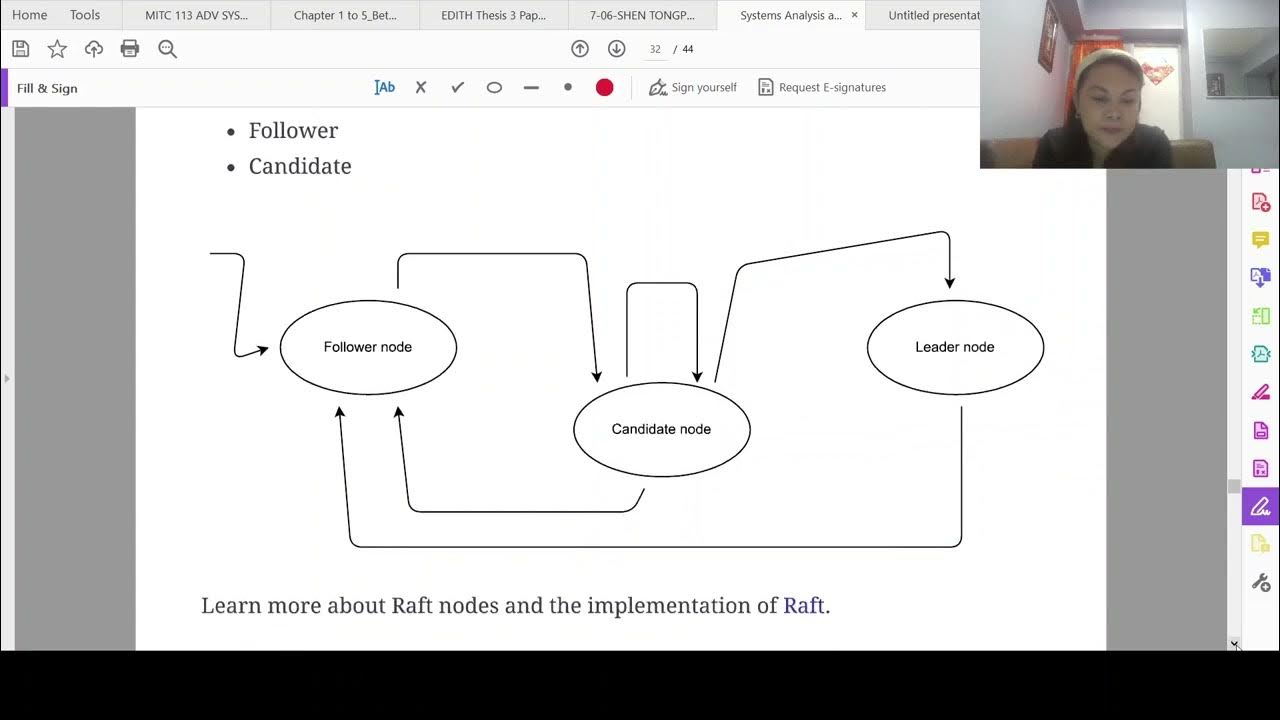iOS Developer Mock Interview | Tech Round (Round-2)
Summary
TLDR本期视频是关于iOS开发技术面试的第二轮,主要探讨了iOS应用的不同状态、应用生命周期、状态保存与恢复、委托模式、Combine框架的使用、Swift中的结构体与类、以及并发处理等话题。还讨论了UIKit的事件处理机制、视图生命周期和SwiftUI中状态属性与绑定属性的区别。整个讨论内容丰富,为iOS开发者提供了宝贵的知识和见解。
Takeaways
- 📱 应用状态:应用有五种状态,包括未运行、不活跃、活跃、后台和挂起状态。
- 📱 应用生命周期:应用在进入后台一段时间后,可能会被系统终止,此时应用处于挂起状态。
- 📱 状态保存与恢复:为了在使用应用时保持用户状态,如阅读小说的页数,需要在应用进入后台时保存状态,并在返回前台时恢复。
- 📱 委托模式:iOS中常用的设计模式,用于在对象间建立通信和数据传递,通过协议定义委托方法。
- 📱 通知与闭包:除了委托模式,还可以使用通知和闭包作为替代方案,适用于不同的场景和需求。
- 📱 Combine框架:用于处理异步和事件驱动的代码,提供声明式的Swift API。
- 📱 发布者与订阅者:在Combine中,发布者负责发送值,订阅者负责接收值,可以处理复杂的数据流。
- 📱 值类型与引用类型:Swift中的结构体是值类型,传递时会被复制,保证数据不变性;类是引用类型,需要小心管理以避免数据不一致。
- 📱 线程安全:在多线程环境下,需要确保对共享资源的访问是线程安全的,可以使用串行队列等机制。
- 📱 UIKit事件处理:UIKit中的事件处理机制包括触摸事件的传递,从硬件触发到视图响应。
- 📱 SwiftUI:SwiftUI中的State和Binding属性用于不同场景,State用于同一视图内状态的维护,Binding用于父子视图间的数据传递和响应。
Q & A
iOS应用程序有哪些状态,以及它们分别在应用程序生命周期的哪个阶段发生?
-iOS应用程序有五种状态:未运行状态(应用未启动或已被终止)、不活跃状态(应用在前台但不接收事件)、活跃状态(应用在前台并接收事件)、后台状态(应用在后台运行但不在前台,例如播放音乐或下载内容)、挂起状态(应用在后台但不执行代码)。
当用户在使用应用时接到电话,应用会处于什么状态?
-当用户在使用应用时接到电话,应用会进入不活跃状态,因为虽然应用仍在前台,但暂时不接收事件。
操作系统是否可以自动结束后台应用,如果是,这通常是为了什么?
-是的,操作系统可以终止后台应用,这通常是为了释放系统资源。
当操作系统决定终止挂起状态的应用时,应用的状态是什么?
-当操作系统终止挂起状态的应用时,应用处于挂起状态。
在iOS开发中,如何确保应用在后台一段时间后重新进入前台时,用户能够回到之前的位置?
-在应用进入后台时,应保存相关信息,如用户的当前页面。这可以通过将数据保存到文件、数据库或使用默认设置来实现。同时,监听应用进入后台的通知,执行保存代码。当用户将应用带回前台时,检查并恢复保存的状态数据。
Swift中结构体使用堆还是栈分配?
-Swift中的结构体使用栈分配,这是因为它们是值类型,当赋值给新变量或作为函数参数传递时会被复制。
为什么使用结构体可以提高性能?
-使用结构体可以提高性能,因为它们是栈分配的,与堆分配的类相比,涉及的开销较小,通常对于小型轻量数据类型更加高效。
为什么在需要维持状态的情况下使用类而不是结构体?
-在需要维持状态的情况下使用类,因为类是引用类型,可以保持对象的状态在不同地方的一致性。此外,类支持继承,适合需要子类化的场景,如UI组件。
如何处理类导致的数据处理不一致问题?
-处理类导致的数据处理不一致问题可以通过使用串行队列来确保对类的属性的访问是同步和序列化的,或者使用其他同步机制,如操作队列、闭包等。
在UIKit中,视图的生命周期是怎样的?
-视图的生命周期包括初始化(使用coder或frame)、布局子视图(layoutSubviews)、添加到窗口(didMoveToWindow)、视图更新(setNeedsLayout和setNeedsDisplay)。
UIKit中setNeedsLayout和setNeedsDisplay方法有什么区别?
-setNeedsLayout方法用于标记视图的布局为无效并需要更新,触发布局更新。setNeedsDisplay方法用于标记视图的内容需要重绘,触发视图的绘制方法。
在SwiftUI中,状态属性和绑定属性有什么区别?
-状态属性用于在同一视图中维护状态,提供双向数据绑定。绑定属性用于将数据传递给其他视图,并期望从子视图反映回父视图的变化,实现父子关系的双向绑定。
Outlines

This section is available to paid users only. Please upgrade to access this part.
Upgrade NowMindmap

This section is available to paid users only. Please upgrade to access this part.
Upgrade NowKeywords

This section is available to paid users only. Please upgrade to access this part.
Upgrade NowHighlights

This section is available to paid users only. Please upgrade to access this part.
Upgrade NowTranscripts

This section is available to paid users only. Please upgrade to access this part.
Upgrade NowBrowse More Related Video

Distributed System Design

7. Layered Knowledge Representations

How to Answer iOS Interview Questions Like a Pro 👩🏽💻👨🏻💻 (free training course)

How to write more flexible game code

AI Leader Reveals The Future of AI AGENTS (LangChain CEO)

Dr. Stacy Sims on Menstrual Cycles, Overtraining & The Hidden Signs of Hormonal Imbalance
5.0 / 5 (0 votes)
